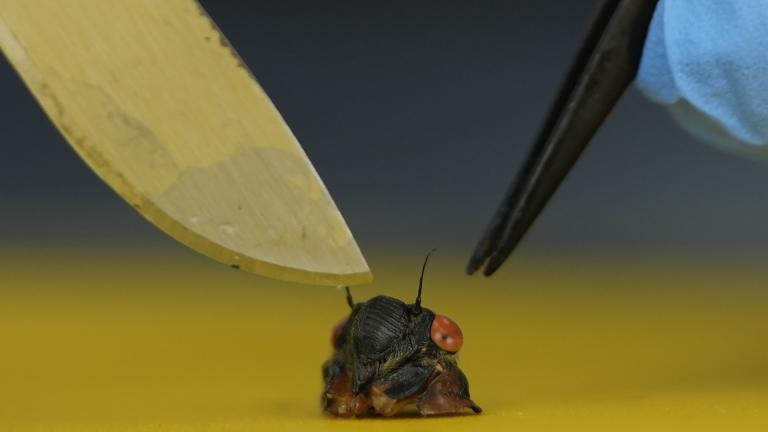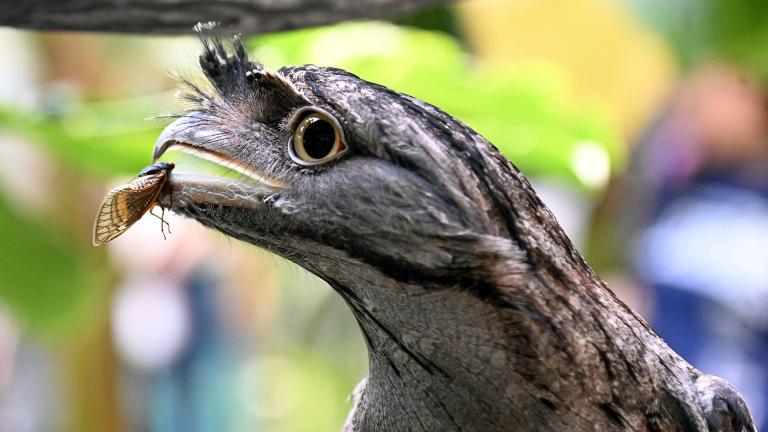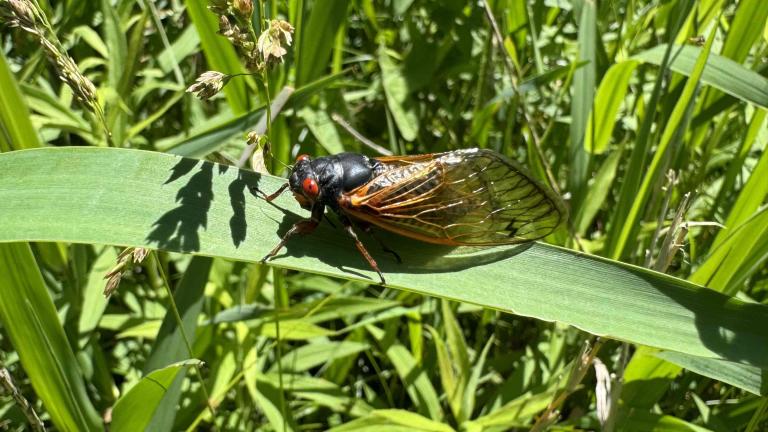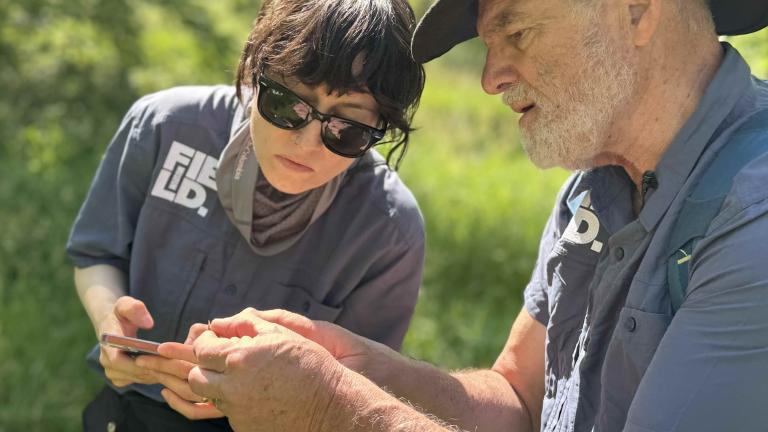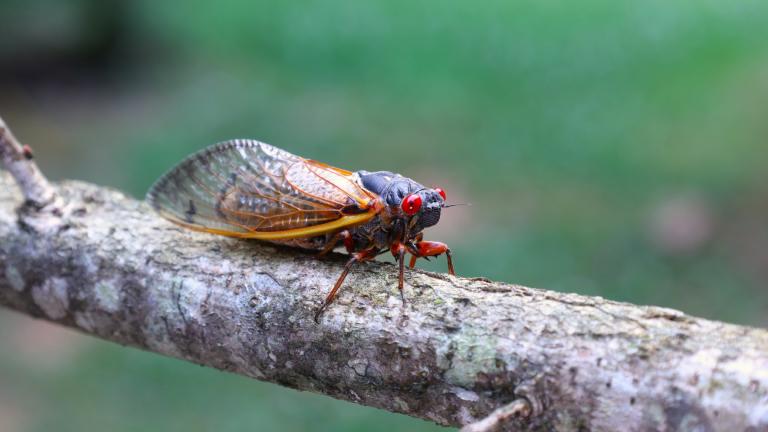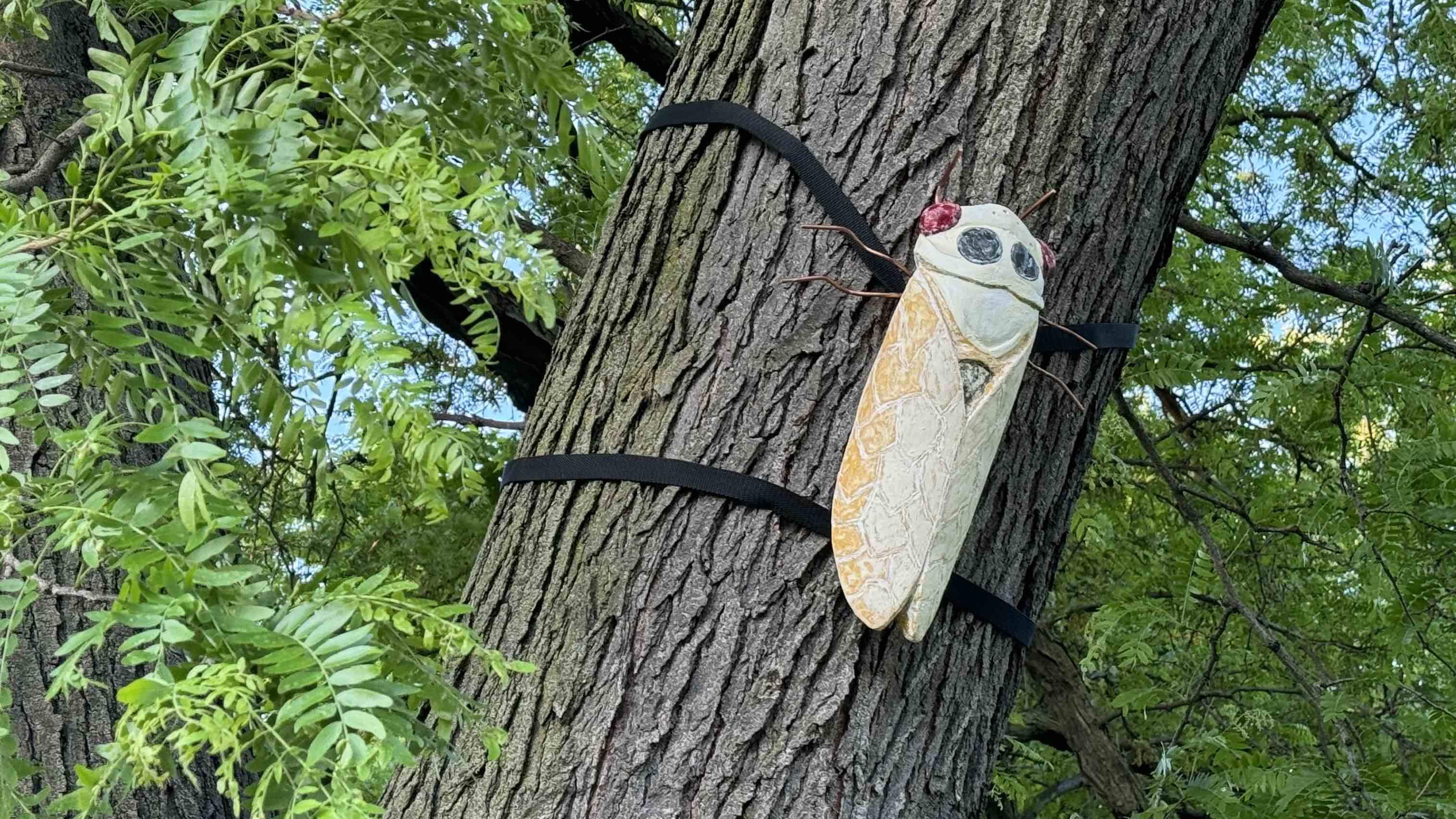 Cicada sculptures, this one in Winnemac Park on the North Side, are as close as many Chicagoans are going to get to the real thing. (Patty Wetli / WTTW News)
Cicada sculptures, this one in Winnemac Park on the North Side, are as close as many Chicagoans are going to get to the real thing. (Patty Wetli / WTTW News)
It’s been a week since the massive emergence of Brood XIII periodical cicadas began in earnest in northern Illinois. In these attention-deficit times, a week might as well be an eon.
Have cicadas already worn out their welcome?
Some of the early “They’re here!” excitement has definitely given way to “Wait, they’re staying for how long?” — particularly in areas bearing the brunt of the emergence. And they haven’t even started singing in full force yet.
My property now belongs to the cicadas. I’m already sick of this. pic.twitter.com/VMNaEfvjPg
— Slavko Bekovic (@SBekovic) May 23, 2024
At the opposite end of the spectrum, Chicagoans — as in people who live within Chicago’s city limits — have developed a serious case of FOMO.
Apart from a few pockets — places like Beverly and neighborhoods on the Far Northwest Side — cicadas are notably absent, which shouldn’t be surprising. The insects need undisturbed soil and mature trees, conditions that are hard to come by in the city.
Successive waves of pests, including emerald ash borer, Asian longhorn beetle and Dutch elm disease, wiped out a lot of Chicago’s older trees and took the cicadas with them. Then there’s the fact that — apart from all the digging up and paving over — much of Chicago was originally prairie or swamp, not the forests periodical cicadas need to survive all those years underground.
Checking in with the Illinois Cicada Watch Facebook group, longtime Chicago residents are sharing their experiences from the last Brood XIII emergence in 2007, most of which boil down to “never saw any.”
Next Best Thing
The actual bugs might be no-shows in Chicago, but cicada sculptures are beginning to pop up in neighborhoods as part of Cicada Parade-a. This art project is a collaboration between Avondale’s Insect Asylum and Formstone Castle Collective in Baltimore.
We stumbled across one of the 18-inch sculptures in Winnemac Park in the Ravenswood area, and Ravenswood Manor has reported several scattered around its charming tree-lined but otherwise cicada-free streets.
A map of all of the sculptures’ placements is still being developed, organizers said.
Ol’ Blue Eyes
The Field Museum has hundreds of cicadas in its collection, but was missing a very specific specimen that had proven elusive to obtain.
Blue-eyed cicadas are said to be a “one in a million” genetic mutation among the normally red-eyed insects. Jim Louderman, a collections assistant at the Field and lifelong Chicagoan, told WTTW News that in the five Brood XIII emergences he’s witnessed in his lifetime — plus a half-dozen more of other broods — he’d never seen one of the blue-eyed bugs.
He has now.
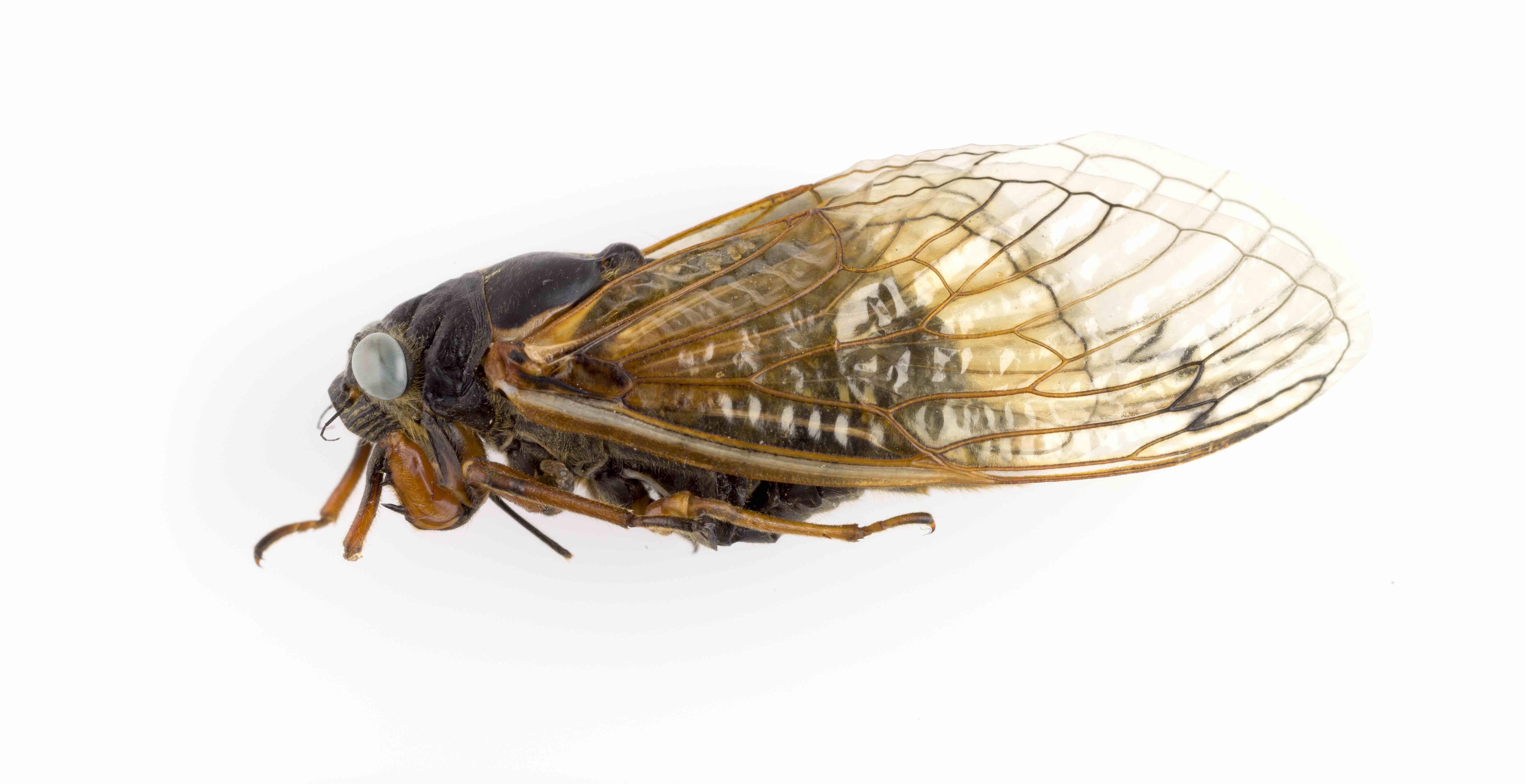 A blue-eyed cicada, donated to the Field Museum. (Daniel Le / Field Museum)
A blue-eyed cicada, donated to the Field Museum. (Daniel Le / Field Museum)
The Bailey family in Wheaton, Illinois, found one of the unusually pigmented cicadas in their yard — credit goes to 4-year-old Jack for the initial discovery — and reached out to the Field Museum once they realized the rarity of the bug.
The family donated the cicada to the Field, where scientists will try to sequence its DNA to potentially learn more about the genes responsible for the blue-eyed variation.
Putting Things in Perspective
For those witnessing the hordes of cicadas streaming from the ground, it’s hard to imagine that the sheer number of bugs living underground feeding on tree sap for 17 years isn’t harmful to the trees.
Thanks to the Field Museum’s Louderman, we now have a better understanding of how trees can withstand the feeding frenzy: The nymphs emerging in year 17 are a vastly bulked up version of their younger selves.
Here’s the difference:
Video: Jim Louderman, a collections assistant at the Field Museum, explains why trees can withstand a cicada feeding frenzy. (Patty Wetli / WTTW News)
The Shape of Things
We’ve seen a lot of images of Brood XIII cicadas with misshapen or damaged wings, and people are wondering what’s happening, particularly because it seems to be affecting a significant number of the insects.
Rather than speculate — lots of armchair cicada “experts” have theories about pesticide use — we posed the question to Gene Kritsky, one of the country’s foremost authorities on periodical cicadas.
According to Kritsky, the cause is cicadas falling to the ground before their wings fully develop.
Remember: Cicadas are nymphs (juveniles) when they come out of the ground. They immediately aim for a vertical surface they can cling to as they shed their exoskeleton. It then takes hours for emergent adults to harden in their new shell and for their wings to develop.
If cicadas get knocked from their perch at any point in this process, their vulnerable wings can get clipped.
Related to this: Adult cicadas are initially milky white when they burst from their exoskeleton. These are the “albino” cicadas people think they’re seeing. The adults darken up after a few hours.
It Could Be Worse
For those who’ve reached the “so over it” stage of Cicada-palooza 2024 — running for another five or six weeks — just a note that things could be worse.
While it’s true the eastern United States is the only place on the planet where periodical cicadas are a thing, there are other species of cicadas elsewhere in the world.
And some of them are huge.
How big?
This big:
Video: Jim Louderman, a collections assistant at the Field Museum, shows WTTW News reporter Patty Wetli cicada specimens from around the world. (Nicole Cardos / WTTW News)
On the Bright Side
You know who’s having the most fun with cicadas?
The DuPage County Forest Preserves’ communications staff.
They’ve created a follow-up to their viral cicada video and it’s every bit as weird and giddy as the first.
Contact Patty Wetli: @pattywetli | (773) 509-5623 | [email protected]

